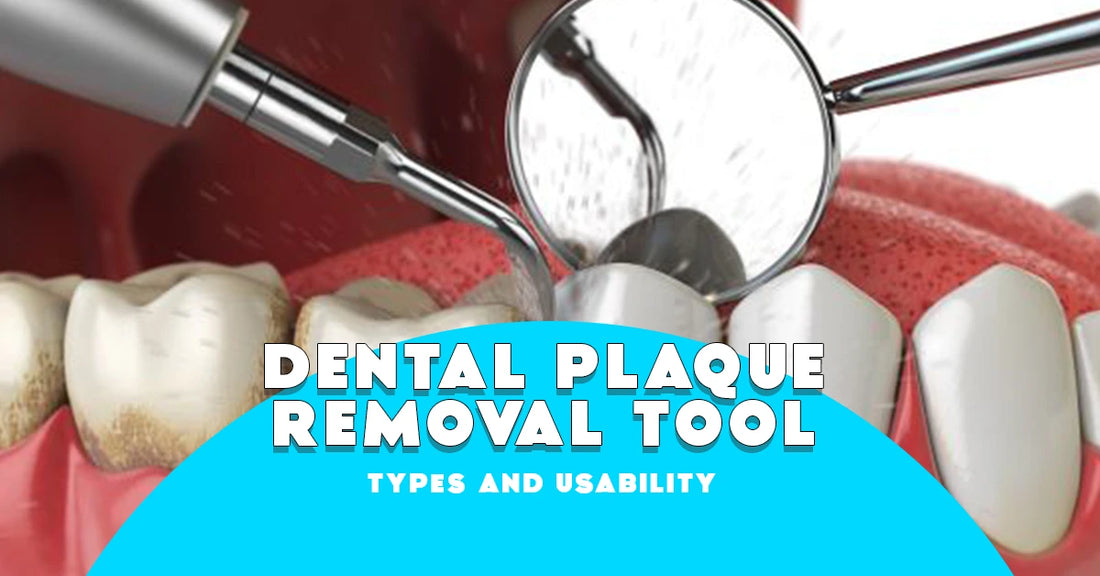Types of Dental Plaque Removal Tools
1. Traditional Toothbrushes
The cornerstone of oral hygiene, toothbrushes are available in various forms, such as manual and electric. Manual toothbrushes rely on the user's physical effort to remove plaque, while electric toothbrushes utilize oscillating or rotating movements for a more efficient clean. The choice between manual and electric toothbrushes often comes down to personal preference, as both can be effective when used correctly.2. Dental Floss
Flossing is an indispensable part of plaque removal, reaching areas between teeth and along the gumline where toothbrushes may struggle. Dental floss comes in different varieties, including waxed and unwaxed, flavored and unflavored. Flossing helps dislodge plaque and food particles, contributing to a thorough oral care routine.3. Interdental Brushes
Designed to clean between teeth, interdental brushes resemble tiny bottle brushes. They are particularly useful for individuals with larger gaps between their teeth. Interdental brushes come in various sizes to accommodate different interdental spaces, ensuring a customized and effective clean.4. Dental Picks
Dental picks, also known as interdental picks or soft picks, are small, flexible devices with bristles or rubber tips. They are adept at removing plaque and debris from hard-to-reach areas, making them a valuable addition to your oral care arsenal.5. Water Flossers
Water flossers use a stream of water to remove plaque and debris from between teeth and along the gumline. These devices are beneficial for individuals with braces or dental work that may impede traditional flossing. Water flossers offer a gentle yet effective alternative for those seeking a versatile plaque removal tool.Benefits of Using Dental Plaque Removal Tools
1. Enhanced Plaque Removal
While regular brushing is crucial, dental plaque removal tools target areas that may be challenging to reach with a toothbrush alone. Interdental spaces, tight corners, and areas near dental appliances can benefit significantly from specialized tools.2. Prevention of Gum Disease
Dental plaque is a leading cause of gum disease, and consistent use of plaque removal tools helps prevent its progression. Gum disease can lead to serious oral health issues, including tooth loss, making proactive plaque removal essential for maintaining healthy gums.3. Cavity Prevention
By removing plaque regularly, dental plaque removal tools contribute to cavity prevention. Plaque harbors bacteria that produce acids, leading to enamel erosion and cavities. Thorough plaque removal minimizes the risk of cavities and preserves tooth structure.4. Fresh Breath
Dental plaque is a source of bad breath, and its removal contributes to a fresher, more pleasant breath. Incorporating plaque removal tools into your routine ensures that odor-causing bacteria are kept at bay, promoting overall oral hygiene.5. Comprehensive Oral Care
Dental plaque removal tools complement traditional brushing and flossing, creating a well-rounded approach to oral care. Each tool serves a unique purpose, collectively contributing to a more thorough and effective cleaning routine.Incorporating Dental Plaque Removal Tools into Your Routine
1. Establish a Consistent Routine
Consistency is key when it comes to oral care. Incorporate dental plaque removal tools into your daily routine, ensuring that you allocate sufficient time for thorough cleaning.2. Consult with Your Dentist
Dentists can provide personalized recommendations based on your oral health needs. Consult with your dentist to determine which plaque removal tools are most suitable for your unique dental profile.3. Proper Technique Matters
Using dental plaque removal tools requires proper technique. Whether it's brushing, flossing, or using interdental brushes, understanding the correct technique ensures optimal plaque removal and overall oral health benefits.4. Stay Informed About New Tools
The field of oral care is continually evolving, with new dental plaque removal tools being introduced regularly. Stay informed about the latest advancements and consider integrating new tools that align with your oral health goals.
Drawbacks of using plaque remover tools at home
While dental plaque removal tools are essential for maintaining oral health, it's crucial to be aware of potential drawbacks. Improper usage of tools like dental picks or interdental brushes may lead to gum irritation or even damage to tooth enamel. Overzealous use, especially with electric toothbrushes, might result in excessive pressure, causing gum recession over time. Additionally, without proper guidance from a dental professional, individuals may choose the wrong tools for their specific needs, potentially leading to ineffective plaque removal or even exacerbating existing dental issues.
FAQs
1. Are electric toothbrushes better than manual ones for plaque removal?
Electric toothbrushes can be more effective for plaque removal due to their oscillating or rotating movements, providing a thorough clean. However, the key is proper usage and consistency, as both types can be effective when used correctly.
2. How often should I replace my interdental brushes or dental picks?
It's recommended to replace interdental brushes or dental picks every 3 to 4 weeks, or sooner if the bristles become frayed. Regular replacement ensures optimal performance and prevents the risk of bacteria buildup on worn-out tools.
3. Can water flossers replace traditional flossing?
While water flossers are effective in removing plaque and debris, they shouldn't replace traditional flossing entirely. Dental floss reaches areas that water flossers may miss, providing a more comprehensive clean between teeth and along the gumline. Combining both methods ensures thorough plaque removal.

